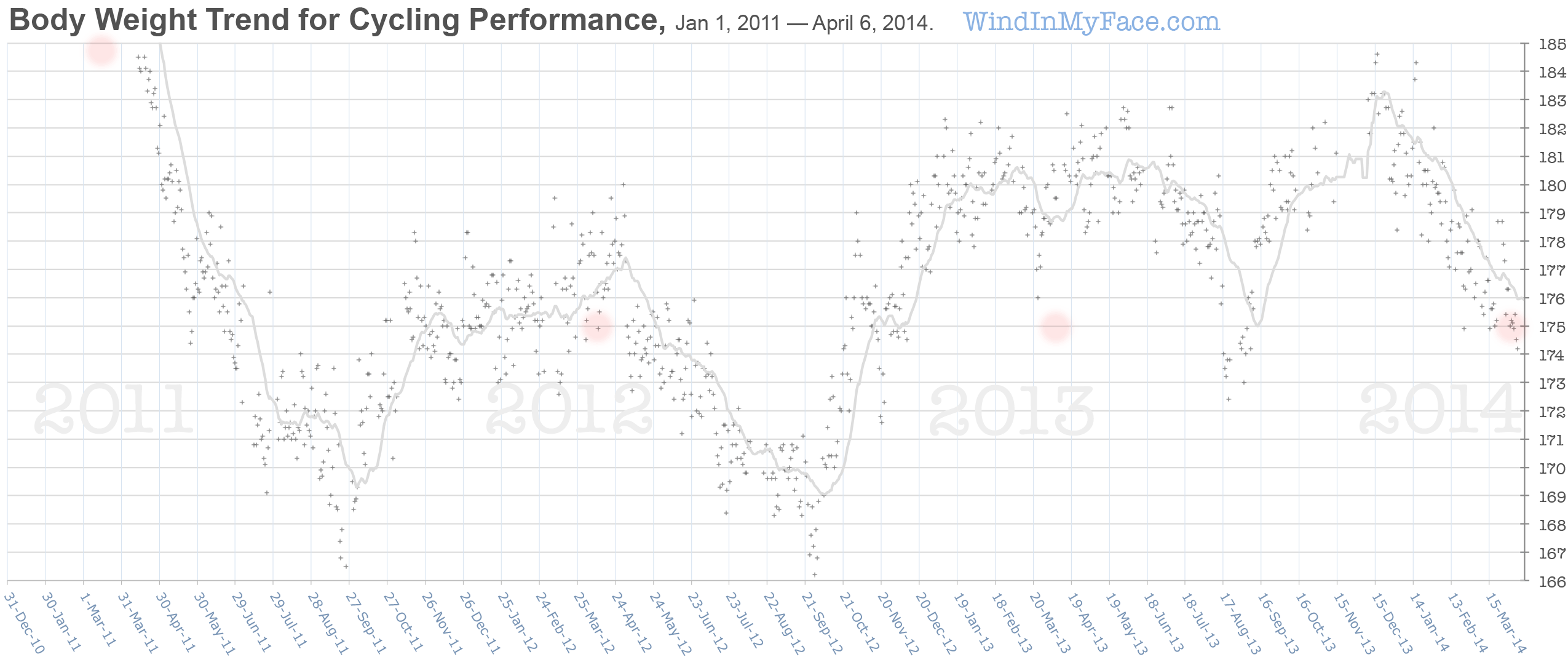
$220 SAVE $130 = 37.0% Western Digital 16.0TB Western Digital Ultrastar DC HC550 3.5-in… in Storage: Hard Drives
|

|

|

|

|
Everest Challenge Training — Weight Loss Trend
Related: body fat, Everest Challenge, hard core, metabolism, Rides, training
I started training seriously on Dec 31, 2010 for the Everest Challenge, after a multi-year break, with a weight of about 202 pounds, which is 23 pounds over my 2006 racing weight of 179, which is about 12% body fat, lean for me after high school. Any weight over 180 and I might as well not even attempt the race— it’s just too demanding and those extra pounds are tough to carry uphill.
The Everest Challenge ascent of 29,000+ vertical feet in two days means that every extra pound translates into 2-3 minutes extra time over the course of the race. Not to mention muscle fatigue and knee comfort and how excess fat reduces the ability of the body to cool itself in hot conditions.
The weight-tracking graph and trendline
By extending the trendline, I can get a sense of when I’ll reach my racing weight, but just as important is catching any failure to stay on trend, thus allowing corrective action (more miles and/or less food!).
Seeing the trend is helpful early in the season to stay on-goal. The trendline can provide key data on whether the goal can realistically be met. It is especially useful once a trend is established, which takes 2-3 weeks.
The off-trend deviation March 1 - 25 was problematic for achieving a sub-180 weight by the end of May (March was very rainy and cold).
In late March, I began carefully monitoring what I ate, and I increased my ride energy burn by about 50% for 10 days; the resulting drop in weight shows up distinctly in the March 27 - May 5 area. Careful tracking and monitoring of diet has kept the trend intact.
The weight loss is no good if it’s losing muscle but a DEXA scans show muscle gain and fat loss, the ideal scenario.
Aggressive riding in early September prior to the Everest Challenge leaned-out my body fat to below 8%, but such low levels of body fat are very hard to sustain. Some muscle and fat gain in October occured, but also some body fat restoration.

Factors influencing body weight
When I talk about weight I generally mean body fat— bone density is largely pre-determined (though it can be improved), and muscle mass changes relatively slowly and we want muscle to increase, not decrease. But body fat is highly amenable to reduction, which is much harder than gaining it in the first place!
To lose body fat while retaining or increasing muscle tissue and strengthening bones, a nutritious diet with the best foods is mandatory. It’s critical to eat for nutrients, meaning nutritious food low in sugar and fat. Food high in nutrients helps keep hunger pangs away and avoid overeating.
The day to day weight is also a function of hydration, food bulk and water content, etc, so it can be expected to vary by several pounds each day. This is why a weigh-in at the same time each day is best to avoid wildly erratic figures that are confusing in the short term. Even so, the chart above shows the variation that still occurs.
Seagate 22TB IronWolf Pro 7200 rpm SATA III 3.5" Internal NAS HDD (CMR)
SAVE $100



